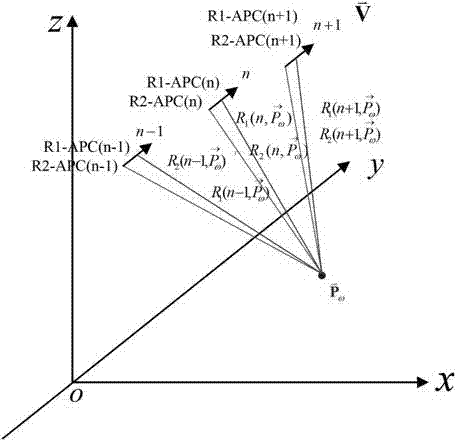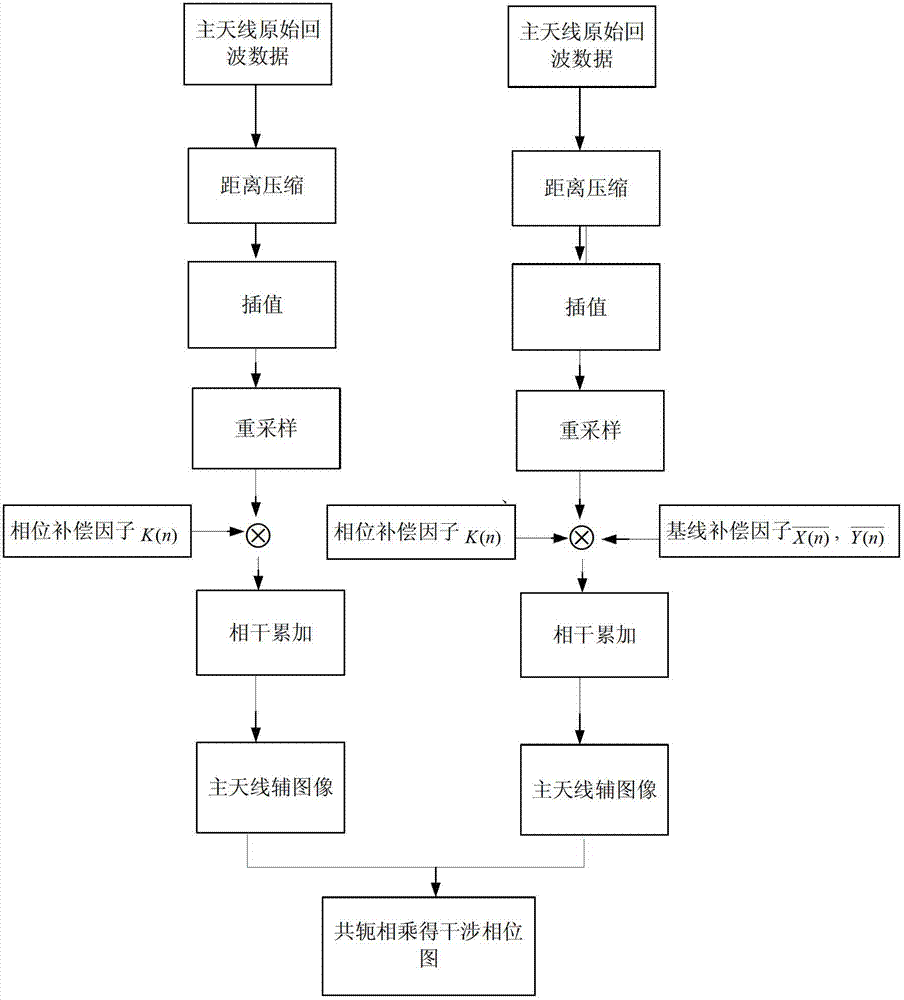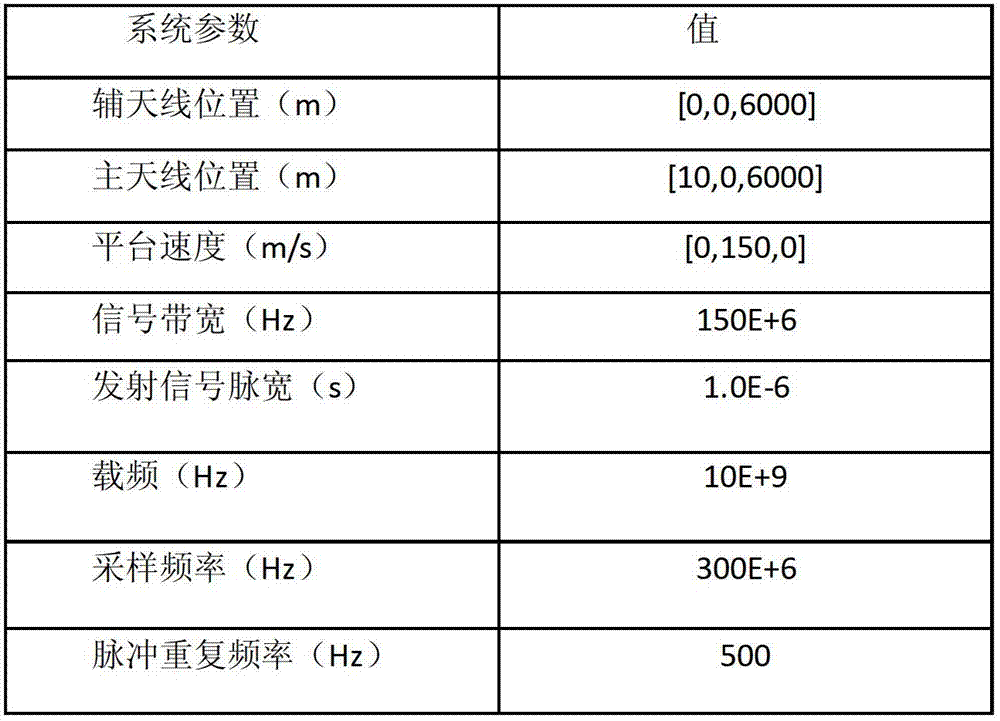Phase compensation method for baseline oscillation of interference SAR (synthetic aperture radar) based on back-projection algorithm
A back-projection and baseline technology, which is used in radio wave measurement systems, radio wave reflection/re-radiation, instruments, etc., can solve problems such as interferogram quality degradation, auxiliary image imaging quality degradation, and elevation inversion baseline selection.
- Summary
- Abstract
- Description
- Claims
- Application Information
AI Technical Summary
Problems solved by technology
Method used
Image
Examples
Embodiment Construction
[0095] The present invention mainly adopts the method of simulation experiment for verification, and all steps and conclusions are verified correctly on VC++ and MATLAB7.0. The specific implementation steps are as follows:
[0096] Step 1. Initialize the parameters of the moving baseline interferometric synthetic aperture radar imaging system:
[0097] The initial imaging system parameters include: platform velocity vector [0 150 0], velocity unit is m / s, initial position vector of platform main and auxiliary antenna [0 0 6000], [10 0 6000], scene center position vector [8000 0 0 ], the unit is m, and the roll, yaw and pitch shake angles at each azimuth moment within a synthetic aperture time are The unit is degrees, the radar carrier frequency is 10GHz, the baseline length is 10m, the signal bandwidth of the baseband signal transmitted by the radar is 150MHz, the pulse width of the radar transmitted signal is 1us, the sampling frequency of the radar receiving system is 300M...
PUM
 Login to View More
Login to View More Abstract
Description
Claims
Application Information
 Login to View More
Login to View More - R&D
- Intellectual Property
- Life Sciences
- Materials
- Tech Scout
- Unparalleled Data Quality
- Higher Quality Content
- 60% Fewer Hallucinations
Browse by: Latest US Patents, China's latest patents, Technical Efficacy Thesaurus, Application Domain, Technology Topic, Popular Technical Reports.
© 2025 PatSnap. All rights reserved.Legal|Privacy policy|Modern Slavery Act Transparency Statement|Sitemap|About US| Contact US: help@patsnap.com



